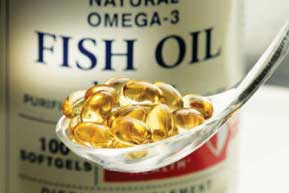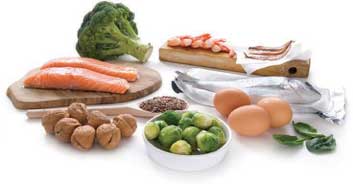Why Blend Oils?
 Oils and fats provide about 9 kcal/g of metabolisable energy compared to 4 kcal/g from protein or carbohydrates. In addition to their caloric and nutritional value, oils and fats carry, enhance and release the flavours of other foods, as well as increase palatability. Oils and fats are a good carrier of Vitamins A, D, E and K with excellent bioavailability.
Oils and fats provide about 9 kcal/g of metabolisable energy compared to 4 kcal/g from protein or carbohydrates. In addition to their caloric and nutritional value, oils and fats carry, enhance and release the flavours of other foods, as well as increase palatability. Oils and fats are a good carrier of Vitamins A, D, E and K with excellent bioavailability.
Polyunsaturated fatty acids (PUFA) cannot be synthesised in the body; therefore, oils and fats provide an excellent source of these essential fatty acids (EFA). Saturated and monounsaturated fatty acids are also very important for several vital functions of the body.
For these reasons, oils and fats and different types of fatty acids should now be considered key nutrients that affect early growth and development, as well as nutrition-related chronic diseases later in life.
Oils and fats are structural bodily components; they are involved in vital physiological processes, including growth, development, inflammation and brain function. Combinations of lipid and protein (lipoproteins) are important cellular constituents, occurring both in the cell membrane and in the mitochondria, and further serve as a means of transporting lipids in the blood.
Globally, the nine major oils consumed are palm, soybean, rapeseed, sunflower, peanut, palm kernel, cottonseed, coconut and olive oils. Various other oils and fats are also consumed depending on local priorities and availability. All the dietary oils and fats are composed of a mix of polyunsaturated, monounsaturated and saturated fatty acids.
 Omega-6 and Omega-3 fatty acids are essential fatty acids commonly known as PUFA; their deficiency may cause several health problems like cardiovascular disease, diabetes, cancer and age-related functional decline.
Omega-6 and Omega-3 fatty acids are essential fatty acids commonly known as PUFA; their deficiency may cause several health problems like cardiovascular disease, diabetes, cancer and age-related functional decline.
High amounts of Omega-6 fatty acids, namely linoleic acid (LA), are present in corn, soybean, sunflower, safflower, cottonseed and sesame oils among others. Omega-3 fatty acids, namely linolenic acid (LnA), are found in select sources like flax seed, soybean and mustard oils.
Fish oil is a unique source of long chain Omega-3 fatty acids, namely eicosapentaenoic acid (EPA) and docosahexaenoic acid (DHA). Over the last decade, some algal oils have been produced as a source of EPA and DHA.
EFAs, namely LA and LnA, are involved in many physiological processes and vital functions such as blood clotting, wound healing and inflammation; they also convert to longer chain fatty acids like arachidonic acid, EPA and DHA. They are further converted to compounds such as prostaglandins, thromboxanes, lipoxin, resolvins and leukotrienes, with hormone-like or inflammatory properties.
PUFA are known for lowering blood total and LDL-cholesterol and slightly increasing HDL-cholesterol. Monounsaturated fatty acids (MUFA) are found in olive, canola, peanut, rice bran, mustard, high oleic sunflower and soybean oils, and are part of animal fats such as chicken, pork and beef. MUFA have a blood total and LDL-cholesterol-lowering effect.
Saturated fatty acids (SFA) are found in the greatest amounts in palm, coconut and palm kernel oils, as well as in cocoa butter, butter and animal fats like beef, pork and chicken. SFA increase blood total, LDL-cholesterol and HDL-cholesterol concentrations and decrease fasting triglyceride concentrations.
What fatty acids do
The fatty acids in oils and fats not only dictate the nutritional properties but also the physical characteristics. The unsaturated fatty acid content of vegetable oils determines their fluidity and other physical and chemical properties of relevance to the food industry.
Oils rich in MUFA are preferred for frying as they are more heat resistant. Oils and fats rich in SFA exhibit higher solid fat content, a property that is required in some food applications (like consistency of fat spreads or formation of layers in pastry), in addition to frying applications.
Oils and fats can also be fingerprinted based on specific nutritional components. For example, palm and rice bran oils contain tocotrienols; palm oil contains beta carotene; rice bran oil contains oryzanol; sesame oil contains lignans; soybean oil contains gama tocopherols; and sunflower oil contains alpha tocopherols. Several oils are projected as healthy oils based on the presence of these nutritional components.
Advice on dietary fat
 The UN Food and Agricultural Organisation (FAO), World Health Organisation (WHO), US Department of Agriculture, EURODIET, Spain, Germany, UK, the Netherlands, Australia, New Zealand and India are among organisations or countries that offer recommendations on consumption of total fat, SFA, MUFA and PUFA as a part of dietary guidelines.
The UN Food and Agricultural Organisation (FAO), World Health Organisation (WHO), US Department of Agriculture, EURODIET, Spain, Germany, UK, the Netherlands, Australia, New Zealand and India are among organisations or countries that offer recommendations on consumption of total fat, SFA, MUFA and PUFA as a part of dietary guidelines.
It is important to keep in mind that these dietary reference values are derived for population groups and not for individuals, whose needs vary depending on personal and lifestyle-related factors. Recommendations vary considerably because some authorities focus on avoiding deficiencies, while others aim to prevent chronic diseases.
One challenge is to translate research findings for different health-related outcomes – such as heart disease, cancer or mortality, with varying consumption levels being beneficial or harmful – to population-based recommendations.
Most organisations, including the FAO and WHO, place the required total dietary fat intake in adults at between 20- 35%E. They advise that 20-35% of the total daily energy intake should come from dietary sources of oils and fats. The upper limit for fat intake is to ensure that people do not consume too many daily calories as fat, since it is the most energy- dense macronutrient.
In general, normal-weight women/men should aim for daily energy equivalent of about 2,000-2,500 kcal; of this, they should consume 20-35%E from total oils and fats, which is equivalent to 44- 78gm/55.5-97gm of oils and fats.
But there is a parallel need to consider the intake of invisible oils and fats. These are consumed via nuts, vegetables, sweets, snacks, ice cream, pickles, baked goods, coconut, meat, cheese, cream, milk and cereals.
The small amounts of invisible oils and fats add up to a substantial level in the daily diet – up to at least 15gm in the rural population and 30gm among urban middle-income and high-income groups in India, according to the National Institute of Nutrition in Hyderabad. This figure may vary from country to country depending on food consumption habits.
According to some health organisations, the recommended daily intake of visible oils and fats is about 25gm for a sedentary adult male and about 20gm for a sedentary adult female. However, this should be adjusted to take into account the intake of invisible oils and fats.
Fatty acid requirements
The recommendations for total fat intake are subdivided for specific fatty acids. Several organisations suggest keeping SFA consumption below 10%E.
However, a meta-analysis published in the British Medical Journal in 2015 found no association between high levels of saturated fats in the diet and coronary heart disease (CHD); and no association was found between saturated fat consumption and other life- threatening diseases like stroke or type 2 diabetes.
It is trans fats that are associated with all- cause mortality, total CHD and CHD mortality. Due to this, the recommendation is to restrict intake to below 1%E.
The recommended PUFA intake ranges between 5% and 12%E. However, some set recommendations for specific PUFA including Omega-3 fatty acids like ALA, EPA and DHA; and Omega-6 fatty acids like LA and, in some cases, also arachidonic acid.
The recommendation for LA (Omega-6) is about 1-10E%, with the FAO/WHO advising 2.5-9%E. For ALA (Omega-3), the recommendation is 0.2-2E%, with the FAO/WHO advising about 2%E. For EPA/DHA, most organisations recommend 0.25- 2gm per day.
The majority of dietary recommendations do not have specific advice for MUFA, although there is an indication of 10-20%E by the FAO.
Finding the right balance
All the fatty acids should be consumed in a balanced manner to prevent deficiency symptoms. Unfortunately, no single vegetable oil or fat can meet all the nutritional and dietetic requirements with a well-defined fatty acid balance.
 The solution lies in the blending of oils to provide the proportionate requirements of SFA, MUFA and PUFA. One of the best combinations to obtain the required balanced fatty acid composition could be palm oil and soybean oil in equal proportions.
The solution lies in the blending of oils to provide the proportionate requirements of SFA, MUFA and PUFA. One of the best combinations to obtain the required balanced fatty acid composition could be palm oil and soybean oil in equal proportions.
Soybean oil provides Omega-3 fatty acids. Palm oil contains 40- 45% SFA (palmitic acid), 35-40% MUFA (oleic acid) and about 10% PUFA (linoleic acid). Whenever MUFA- or PUFA-rich oils have to be balanced with SFA, palm oil is the only optimum source of SFA. It is also a natural substitute for hydrogenated oils that create trans fats.
In addition, palm oil contains unique nutraceuticals such as beta carotene and tocotrienols along with tocopherols and squalene. Tocotrienols are isomers of Vitamin E and are known to exhibit powerful antioxidant properties with anti- inflammatory effects. They also impact lipid metabolism via a key regulatory enzyme.
Dr RBN Prasad
Platinum Jubilee Mentor & Former Chief Scientist,
Centre for Lipid Research,
CSIR-Indian Institute of Chemical Technology
Hyderabad, India
Disclaimer: This article was first published in Global Oils & Fats Business Magazine (Vol 13, Issue 4)










Leave a Reply